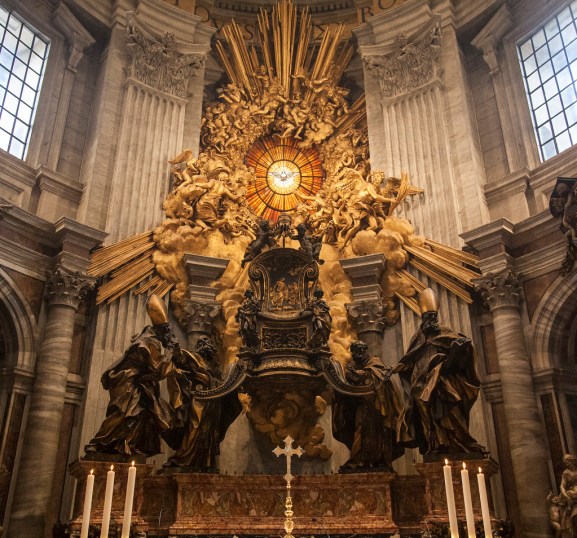Most feast days on the Church calendar celebrate a person or persons. These saints, blesseds, and venerables lived holy lives, are now in Heaven, and can be prayed to for their intercession in our lives. On February 22nd, we celebrate a chair. By its nature, it can have none of those qualities. Although the Feast of the Chair of St. Peter may seem odd at first, its meaning is deeply rooted in the truths of the faith.

The Chair of St. Peter is both a symbol of the first Pope’s authority and a physical chair. Every bishop has a chair that represents his authority and office. Pope Emeritus Benedict explained in a general audience on this feast in 2006 that “the Chair of the Bishop of Rome represents not only his service to the Roman community but also his mission as guide of the entire people of God”. This feast celebrates that mission. The gospel reading for the day comes from the Gospel of Matthew chapter 16, where Jesus renames Simon Peter and calls him the “rock” on which He will build His Church. St. Peter’s “Chair” is his authority and mission to lead the Church.
The Chair also symbolizes the unity of the Church under the pope. Pope Benedict went on to say that celebrating the Chair of St. Peter “means attributing a strong spiritual significance to it and recognizing it as a privileged sign of the love of God, the eternal good shepherd, who wanted to gather his whole Church and lead her on the path of salvation”. The universal church is gathered under the one see of Rome and the one chair of Peter.
But what about the actual chair? The object itself is in St. Peter’s Basilica. It is believed the chair was used by St. Peter himself. While it has been modified and adorned throughout the centuries, the original wooden seat is still found in the Vatican. In the 17th century, the chair was enclosed in a bronze sculpture by the artist Bernini. This is the large throne we see today in St. Peter’s under a stained glass window of the Holy Spirit.

In 1867, on the anniversary of the deaths of Sts. Peter and Paul, the wooden chair was exposed for viewing and veneration. The Catholic Encyclopedia explains that under all the adornments and other modifications, “the oldest portion [of the chair] is a perfectly plain oaken arm-chair with four legs connected by cross-bars. The wood is much worm-eaten, and pieces have been cut from various spots at different times, evidently for relics”. The humble nature of the original chair tells us a lot about our first Pope and the circumstances he lived in.
The Feast of the Chair of St. Peter is strange but not without meaning. Catholics may be known for weird practices and celebrations. But if you dig a bit there’s almost always a beautiful explanation.
